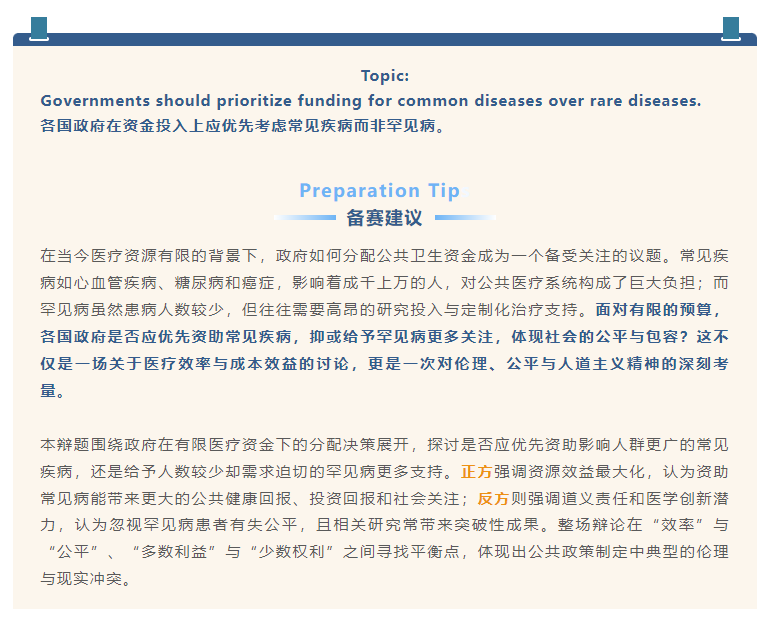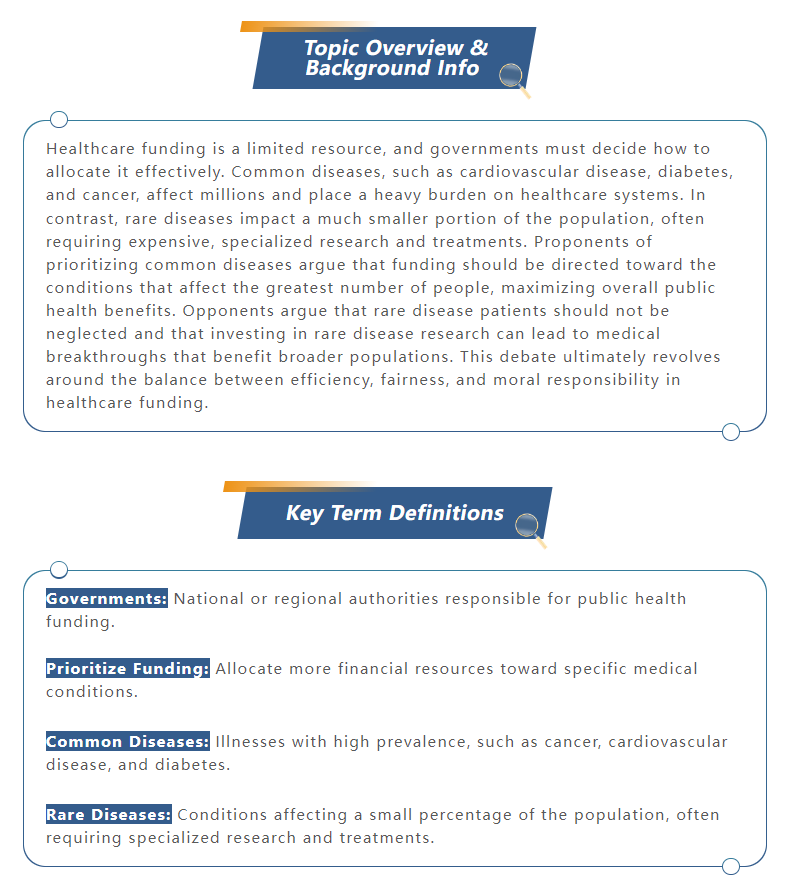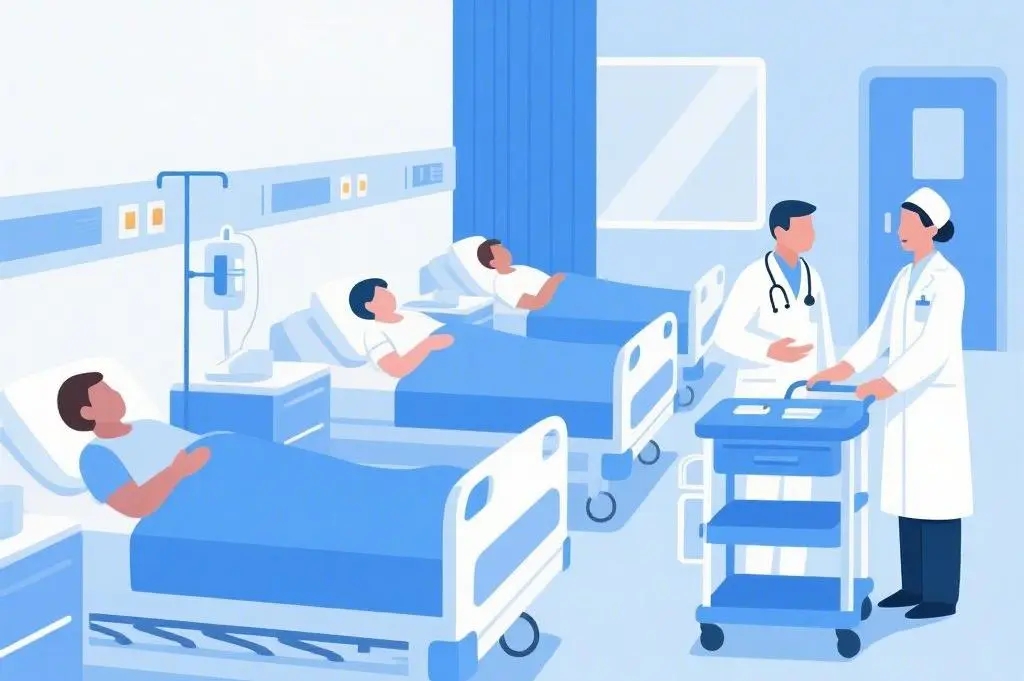


Pro Arguments

01
Greater Public Health Impact
Analysis: Common diseases like heart disease, diabetes, and cancer affect hundreds of millions of people worldwide and place a significant burden on public health systems. Allocating more resources to these conditions attends to the need of the largest portion of the population, leading to more lives saved and better overall health outcomes.
Example:"The benefits of the majority outweigh that of the few. Focusing on cancer and heart disease, which affect millions, would save more lives than focusing on rare conditions that affect a few."
02
Better Return on Investment
Analysis: Medical research tends to be costly and requires massive application to cover the cost in the long run. Research into common diseases tends to offer a higher return on investment due to the broader usage. The larger number of patients means that any advancement in medication can be widely used and generate huge profit.
Example:"A drug developed for diabetes could improve the lives of millions, creating a stronger public health return on research funding. It is only with ample funding that researches can continue."
03
Larger Public Support
and Awareness
Analysis: Since common diseases tend to be more widespread, they often have significant public attention and support. This would result in more public donations and volunteer efforts, which can increase government funding. Focusing on common diseases aligns with public interests and ensures higher levels of collaboration for research and treatment.
Example: "The widespread support for cancer research has led to massive fundraising efforts, making it easier for governments to prioritize funding for such diseases. As a result, breakthroughs happen more easily."
04
Resource Efficiency
Analysis: With limited healthcare budgets, governments must prioritize conditions with the most significant impact on society. At the same time, common diseases also tend to have more established existing material. Funding for common diseases ensures that resources are allocated where they will benefit the greatest number of people with the smallest amount of effort, maximizing societal benefit.
Example:"Funding for mass immunization programs would be more effective and cheaper in preventing widespread outbreaks than funding niche treatments for rare diseases."
Con Arguments

01
Moral Responsibility to Help All
Analysis: Every life is valuable, regardless of whether someone suffers from a common or rare disease. Since the needs of patients with common diseases have already been properly addressed, governments have an ethical obligation to support research for rare diseases, ensuring that those affected by these conditions receive proper care and treatment.
Example:"Even though rare diseases affect fewer people, those who suffer from them still deserve effective treatments. What’s more, those with common diseases could already have their conditions treated."
02
Innovation Through
Diversity of Research
Analysis: The mechanisms behind common diseases have already been well understood and could hardly generate any breakthroughs. Research into rare diseases often leads to breakthroughs as it may uncover new treatment methods, diagnostic tools, or scientific insights that can benefit the medical industry and our knowledge.
Example:"Research into rare genetic diseases has led to treatments that can be applied to other conditions, such as cancer therapies. Some of the greatest advancements came from research on rare diseases."
03
Neglected Populations
Analysis: Rare diseases are often overlooked because they affect small populations. These individuals not only face isolation and lack of medical resources but also tend to be discriminated against. Governments should prioritize equity in healthcare by ensuring that both common and rare diseases receive adequate attention and funding.
Example:"Without funding for rare diseases, patients like those with ALS are left with limited treatment options and fewer clinical trials. A small portion of our society would stay neglected and discriminated."
04
Long-term Societal Benefits
Analysis: Research on rare diseases can result in long-term benefits by facilitating innovation in medicine and personalized treatments. While the population that immediately benefits from this may be small, advancements made in treating rare diseases can eventually benefit all patients in unique ways.
Example:"The technology used in gene therapy for rare diseases may one day be adapted for common diseases like cancer or neurological disorders."
Strategies
The pro side should structure their case around cost-effectiveness, arguing that funding common diseases benefits the majority and reduces overall healthcare costs. They should use data to compare the societal impact of widespread illnesses versus rare conditions.
The con side should counter by emphasizing ethical obligations, arguing that rare disease patients are often neglected and that medical advancements for rare diseases can have broader scientific benefits. They should shift the burden onto the pro side to justify why some lives deserve more investment than others.
Both sides need to strategically frame the debate around fairness, efficiency, and moral responsibility.
这场辩论是对公共资源分配、医疗公平与人道关怀的深刻思考。希望小辩手们在学习辩题资料后,能够理解不同立场的背后逻辑,挖掘辩题的多重维度,在比赛中游刃有余,展现出更强的辩论技巧与深度思辨能力。
比赛不只是为了赢得胜利,更是为了在思维的碰撞中收获成长。5月场线上活动即将开始,期待小辩手们的精彩表现!
英锐专注教育30年,升学+培训,一站式服务!
免费咨询热线:400-028-8928
地址:成都市锦江区红星路三段1号IFS国际金融中心1号楼13A
